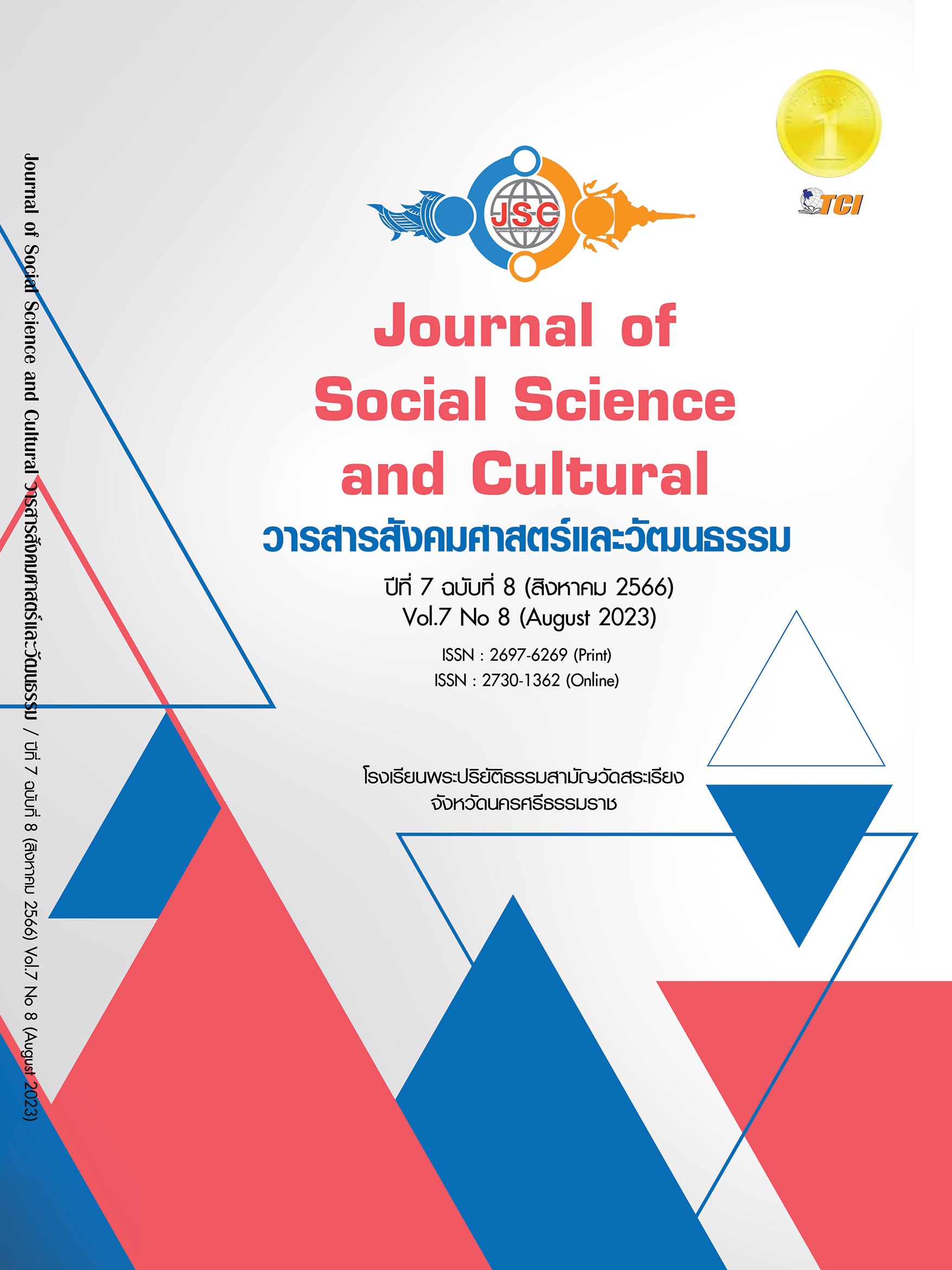THE CAUSAL FACTORS INFLUENCING THE OPERATIONAL EFFICIENCY OF THAI TRANSPORTATION INDUSTRY
Main Article Content
Abstract
This study aims to examine causal factors such as market orientation, technology acceptance, and innovative cultural influences that affect the application of suitable technology in the transportation industry in Thailand. Additionally, the study investigates the impact of applying technology appropriate to the work on the operational efficiency of the transportation business in Thailand. The research focuses on the implementation of technology that aligns with the work processes. It explores the driving factors behind the adoption of technology, which is a crucial aspect of transitioning into the digital age. This is quantitative research conducted using data collected from a sample group of 393 Thai transportation business entrepreneurs. A questionnaire was developed based on relevant research reviews, covering variables including market orientation, technology acceptance, innovative cultural influences, application of technology suitable for work, and the efficiency of the transportation business. These variables were developed using the IOC technique and tested for reliability, with an obtained IOC value of 1 and a Cronbach’s alpha value greater than 0.7 on all aspects. The study's findings were analyzed using structural equation modeling to test hypotheses for each issue and to identify the direct and indirect influences of the variables tested. The results of the study revealed that market orientation, technology acceptance, and innovative cultural influences influence the application of technology suitable for work. Moreover, market orientation, technology acceptance, and innovative cultural influences significantly affect the efficiency of the transportation business through the application of technology suitable for work. The study highlights the importance of these factors in adopting technology in the transportation industry and enhancing business efficiency.
Article Details
References
กรมพัฒนาธุรกิจการค้า. (2565). จำนวนผู้ประกอบการธุรกิจขนส่งไทย. เรียกใช้เมื่อ 19 มิถุนายน 2565 จาก https://datawarehouse.dbd.go.th/searchBusinessObject?type=business
กัลยา วาณิชย์บัญชา. (2564). การวิเคราะห์สมการโครงสร้าง (SEM) ด้วย AMOS. กรุงเทพมหานคร: ภาควิชาสถิติ คณะพาณิชยศาสตร์และการบัญชี จุฬาลงกรณ์มหาวิทยาลัย.
Abu, F. et al. (2014). Technology Acceptance Model (tam): Empowering Smart Customer to Participate in Electricity Supply System. Journal of Technology Management and Technopreneurship, 2 (1), 85-94.
Alnawas, I. & Hemsley-Brown, J. (2019). Market orientation and hotel performance: investigating the role of high-order. marketing capabilities, 31(4), 1885-1905.
Anjaningrum, W. D. & Widi, A. P. (2018). The influence of market orientation, innovation and product creativity on the performance of the creative industry to achieve competitive advantage (a study on the creative industries
incorporated in Malang creative fusion. Asian Business and Economic Science Journal, 12(2), 30-47.
Bamfo, B. A. & Kraa, J. J. (2019). Market orientation and performance of small and medium enterprises in Ghana: The mediating role of innovation. Cogent Business & Management, 6(1), 1-16.
Delpechitre, D. et al. (2019). The dark side of technology: examining the impact of technology overload on salespeople. Journal of Business & Industrial Marketing, 34(2), 317–337.
Dwivedi, Y. K., et al. (2019). Re-examining the unified theory of acceptance and use of technology (UTAUT): Towards a revised theoretical model. Information Systems Frontiers, 21(3), 719-734.
Faryabi, M. et al. (2011). Investigate the relationship between market orientation and competitive advantage in the Iran Tractor Manufacturing Industries. Iranian Journal of farasoye modiriat, 5(17), 131-160.
Goodhue, D. (1998). Development and measurement validity of a task-technology fit instrument for user evaluations of information systems. Decision Sciences, 29(1), 105-138.
Hidayat, A. et al. (2021). Consumer Trust as the Antecedent of Online Consumer Purchase Decision. Information, 12(1), 1-10.
Jain, V., & Kanungo, S. (2013). Realising IT value: post adoptive IS usage and performance impacts at individual level. International Journal of Business Information Systems, 14(2), 202-222.
Lee, D. & Lehto, M. (2013). User acceptance of YouTube for procedural learning: An extension of the Technology Acceptance Model. Computers & Education, 61(1), 193-208.
Najib, M. F. et al. (2017). Market orientation, buyer-supplier relationship and firm performance with dynamic capabilities as an intervening variable: a research model. International Journal Business and Globalization, 19(4), 567-582.
Tang, G, K. et al. (2020). mpact of Innovation Culture, Organization Size and Technological Capability on the Performance of SMEs: The Case of ChinaI. China: Sustainability 2020.


